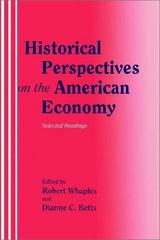Book: economics a contemporary introduction Chapter 8
Questions for Review 1. Market Structure Define market structure. What factors are 6. Zero Economic Profits in the Long Run Why would firms considered in determining the market structure of a particular choose to operate in a perfectly competitive market even though industry? they earn no economic profit in the long run? 2. Demand Under Perfect Competition What type of demand 7 . Long-Run Industry Supply Why does the long-run industry curve does a perfectly competitive firm face? Why? supply curve for an increasing-cost industry slope up to the . Total Revenue Look back at Exhibit 3, panel (a), in this chap- right? What increases costs in an increasing-cost industry? ter. Explain why the total revenue curve is a straight line from 8. Perfect Competition and Efficiency Define productive effi- the origin, whereas the slope of the total cost curve changes. ciency and allocation efficiency. What conditions must be met to 4. Profit in the Short Run Look back at Exhibit 3, panel (b), in this achieve them? chapter. Why doesn't the firm choose the output that maximizes 9 . Case Study: Experimental Economics In Professor Vernon average profit (i.e., the output where average cost is the lowest)? Smith's experiment, which "buyers" ended up with a sur- 5. The Short-Run Firm Supply Curve An individual competitive plus at the market-clearing price of $2? Which "sellers" had firm's short-run supply curve is the portion of its marginal cost a surplus? Which "buyers" or "sellers" did not engage in curve that equals and rises above the average variable cost. transactions? Explain why. Problems and Exercises 10. Short-Run Profit Maximization A perfectly competitive firm 11. The Short-Run Firm Supply Curve Use the following data to has the following fixed and variable costs in the short run. The answer the questions below: market price for the firm's product is $150. Q VC MC AVC Output FC VC TC TR Profit/Loss $10 $10 $o $16 $100 100 $20 $100 $180 1 1 1 1 1 1 $25 $100 $300 $31 1111111 1 1 6 0 V A UT A W N A W $100 $440 1 1 1 1 1 $38 $100 $600 $46 $100 $780 $55 1 1 $65 a. Complete the table. b. At what output rate does the firm maximize profit or mini- a. Calculate the marginal cost and average variable cost for mize loss? each rate of output. c. What is the firm's marginal revenue at each positive rate of b. How much would the firm produce if it could sell its prod- output? Its average revenue? uct for $5? For $7? For $10? d. What can you say about the relationship between marginal c. Explain your answers. revenue and marginal cost for output rates below the d. Assuming that its fixed cost is $3, calculate the firm's profit-maximizing (or loss-minimizing) rate? For output economic profit at each output rate determined in part (b). rates above the profit-maximizing (or loss-minimizing) rate







